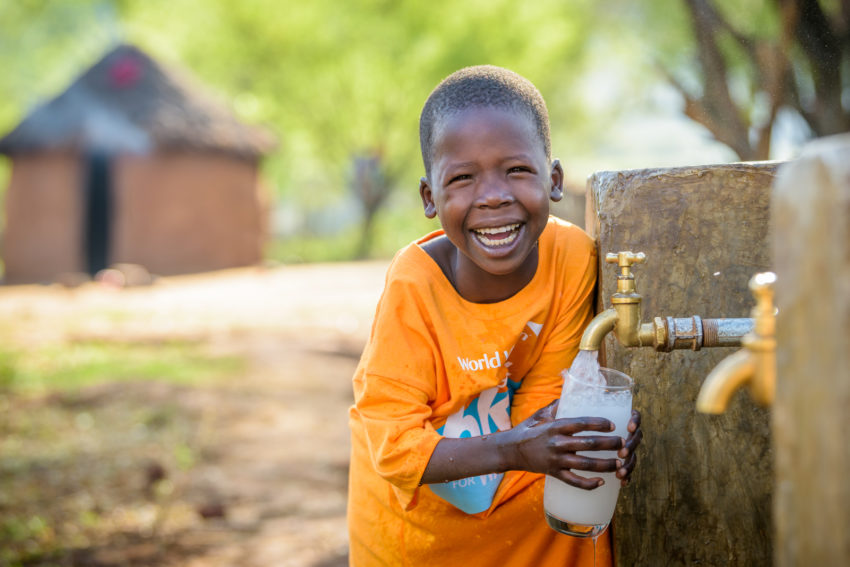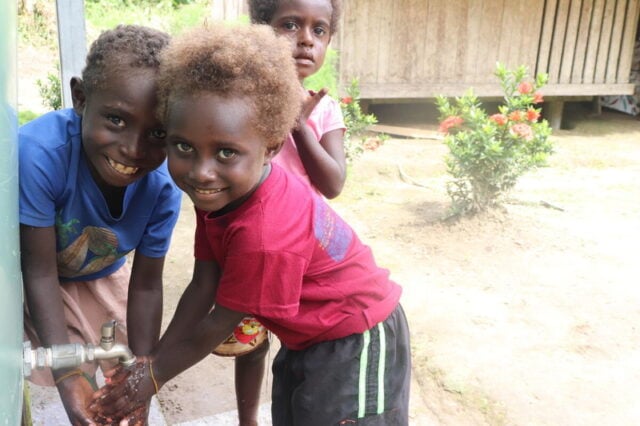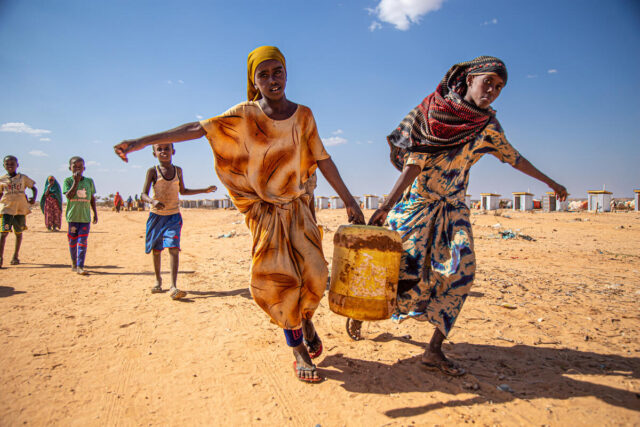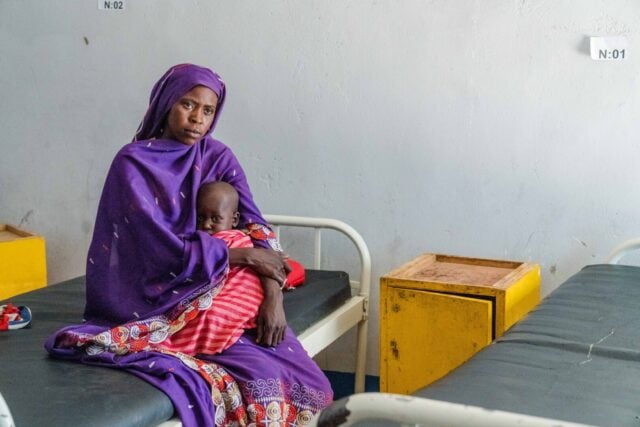The story of 5-year-old Cheru, whose daily life in Kenya was consumed with finding water, has inspired thousands of people around the world to walk or run World Vision’s Global 6K for Water. Cheru’s lack of clean water and sanitation made her sick, threatened her education, and limited her family’s income. Today, thanks to caring donors, Cheru, her family, and neighbors have clean water and so much more.
World Vision staff and community volunteers worked together to bring water from a pure mountain spring to Cheru’s village 16 kilometers away. Here’s how they transformed their lives through clean water:
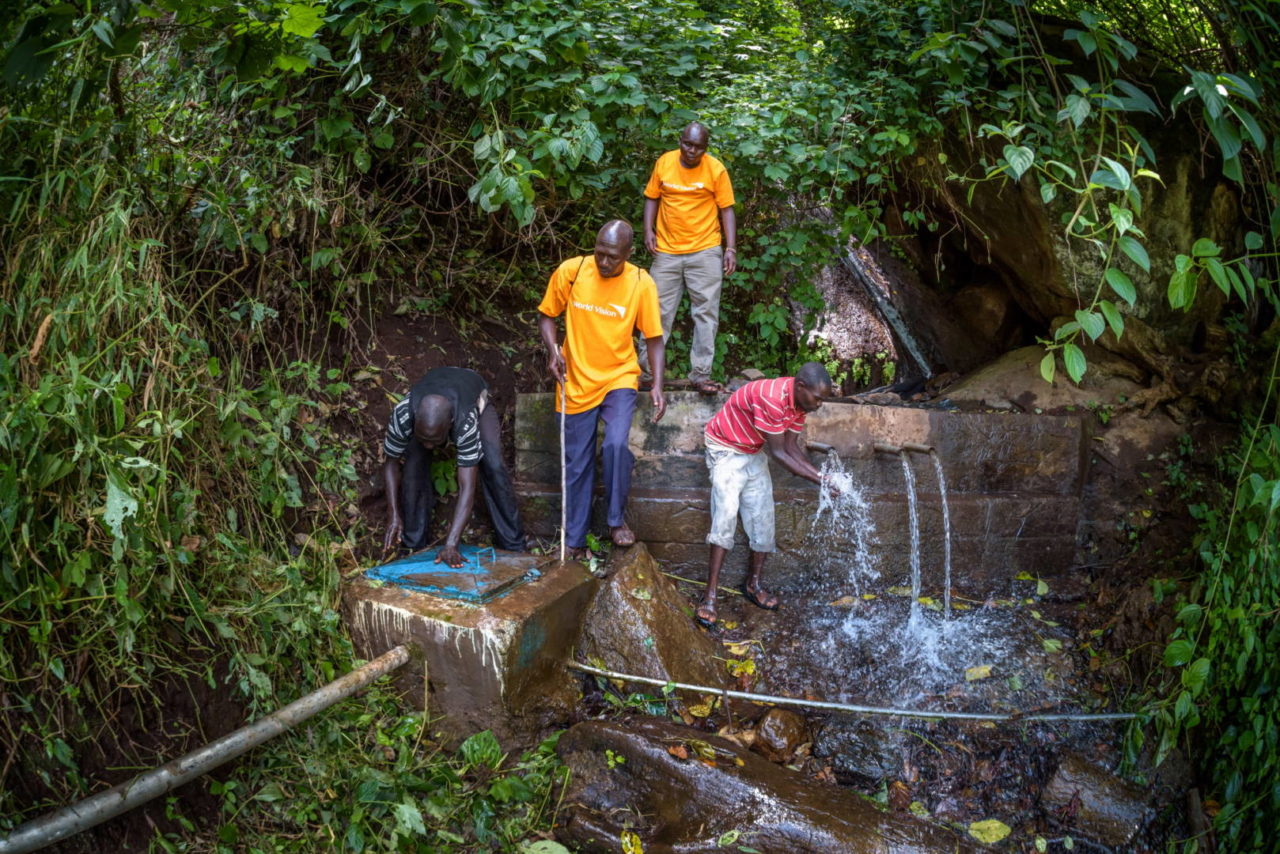
World Vision staff and volunteers inspect the intake dam that diverts water from the Kwok River to feed a gravity water system for three villages in West Pokot County, Kenya. The county water ministry constructed the dam some years before, but the water project was abandoned before completion. World Vision organized the three communities to restart the project. An environmental impact assessment shows the water quality is excellent and the flow plentiful year-round, says Charles Kakiti, World Vision water engineer, second from left. (©2018 World Vision/photo by Jon Warren)
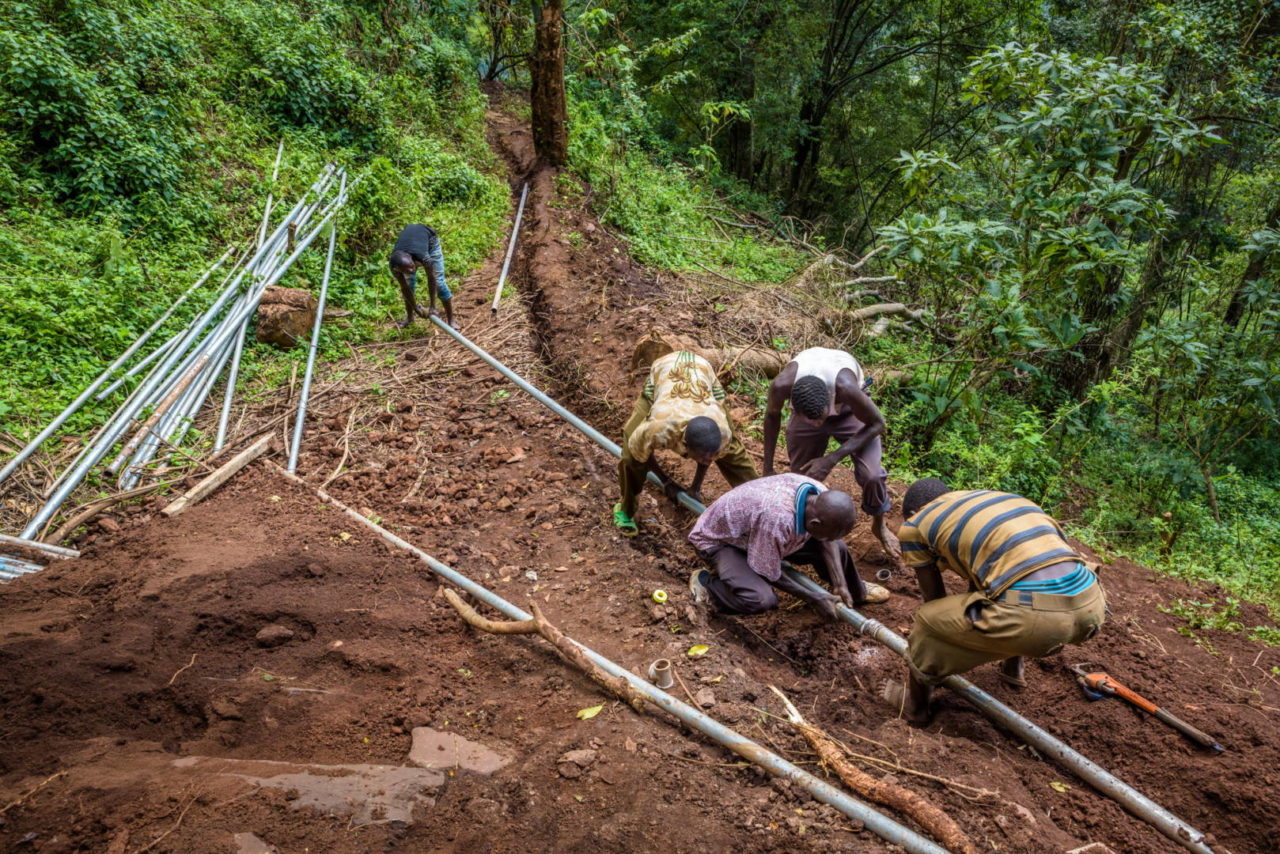
Led by skilled contractors, local workers lay pipes to transport clean water to more than 1,000 households and their livestock. They clear brush, dig trenches, and carry sand, rocks, and other materials. The pipeline traverses 16 kilometers (nearly 10 miles) of often difficult terrain. (©2018 World Vision/photo by Jon Warren)
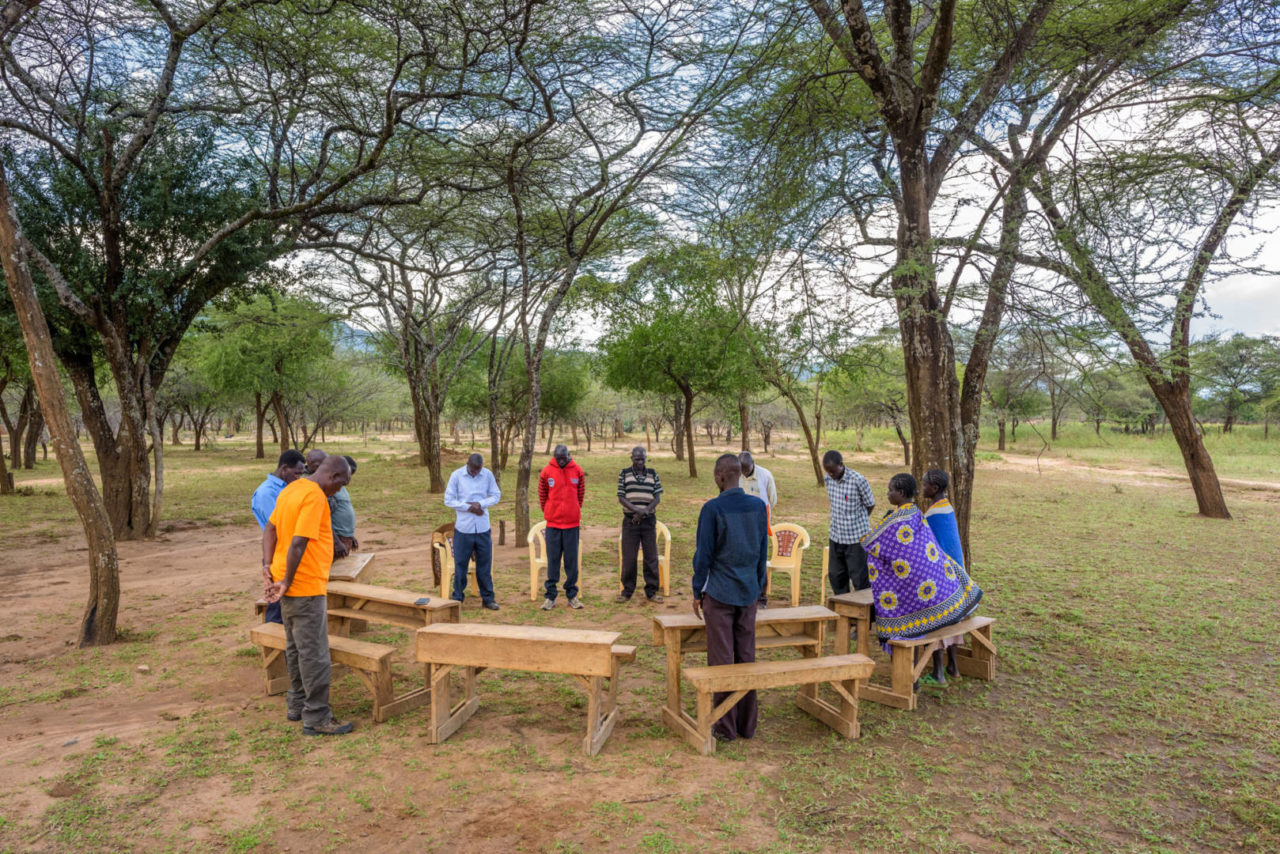
Water committee members pray during a meeting. They credit God with the blessings that have come to them with clean water. Each of the three participating villages elected five committee members to represent them on the committee. Community members were involved in every aspect of the design and construction of the pipeline, from the location of water kiosks to user fees. (©2018 World Vision/photo by Jon Warren)
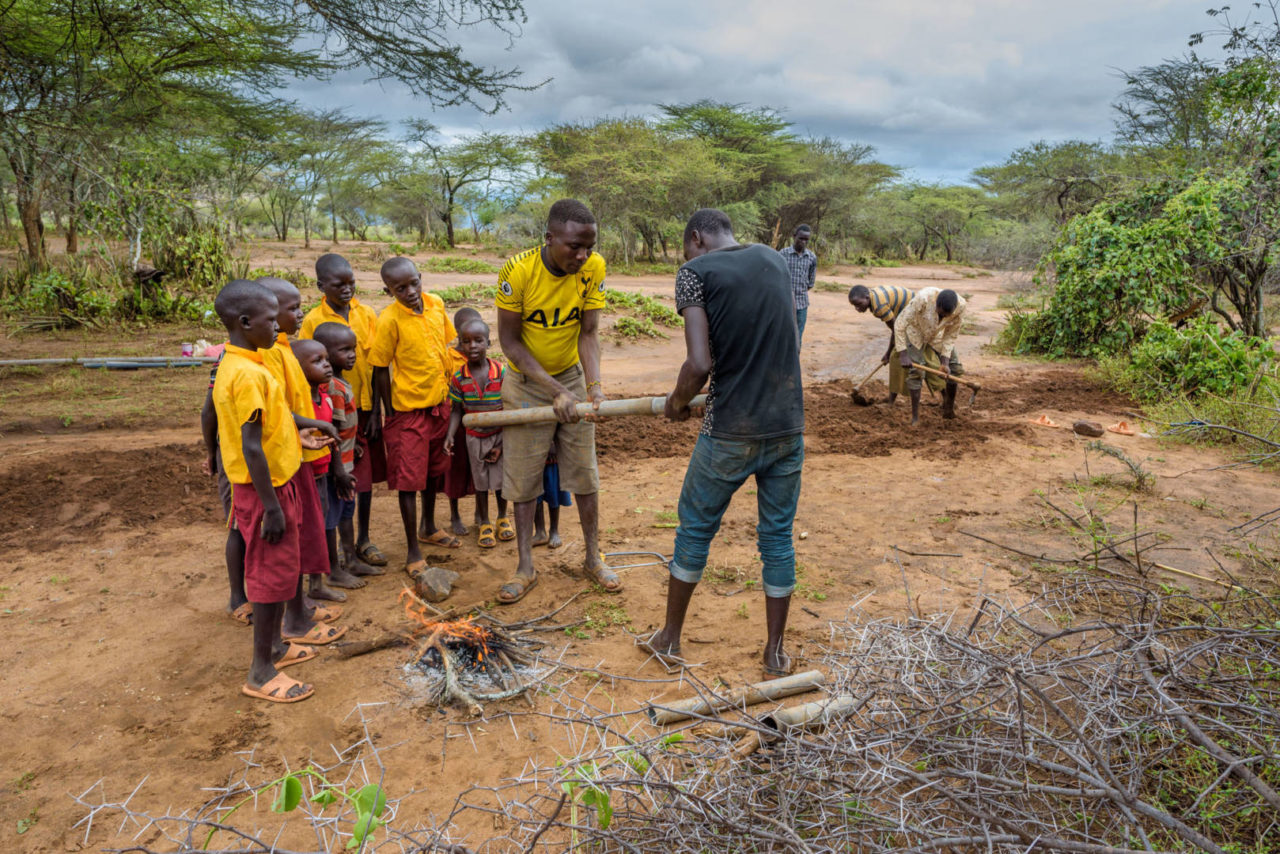
Children stop on the way to school to watch local technicians repair a break in the pipeline caused by a flash flood. The workers and volunteers along the route monitor the pipeline daily so repairs can be made quickly to keep the water flowing. When the under story of plants has regrown in a few years, they will protect the pipeline from washouts. (©2018 World Vision/photo by Jon Warren)
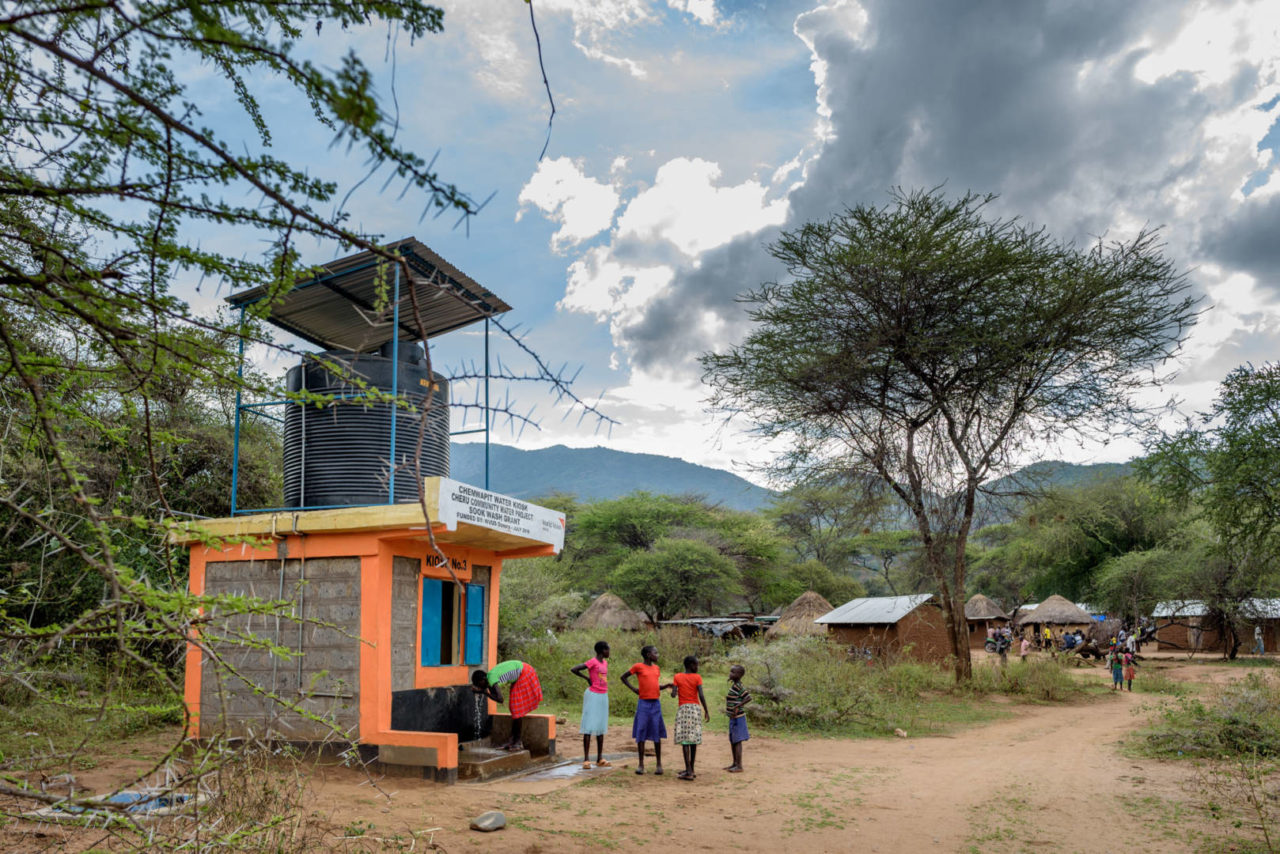
The weekly market at Chemwapit has grown and is held year-round now that there is a water kiosk nearby. Vendors have opened restaurants and tea shops and the county water department built toilets. The livestock market has expanded because there’s a water trough for animals. (©2018 World Vision/photo by Jon Warren)
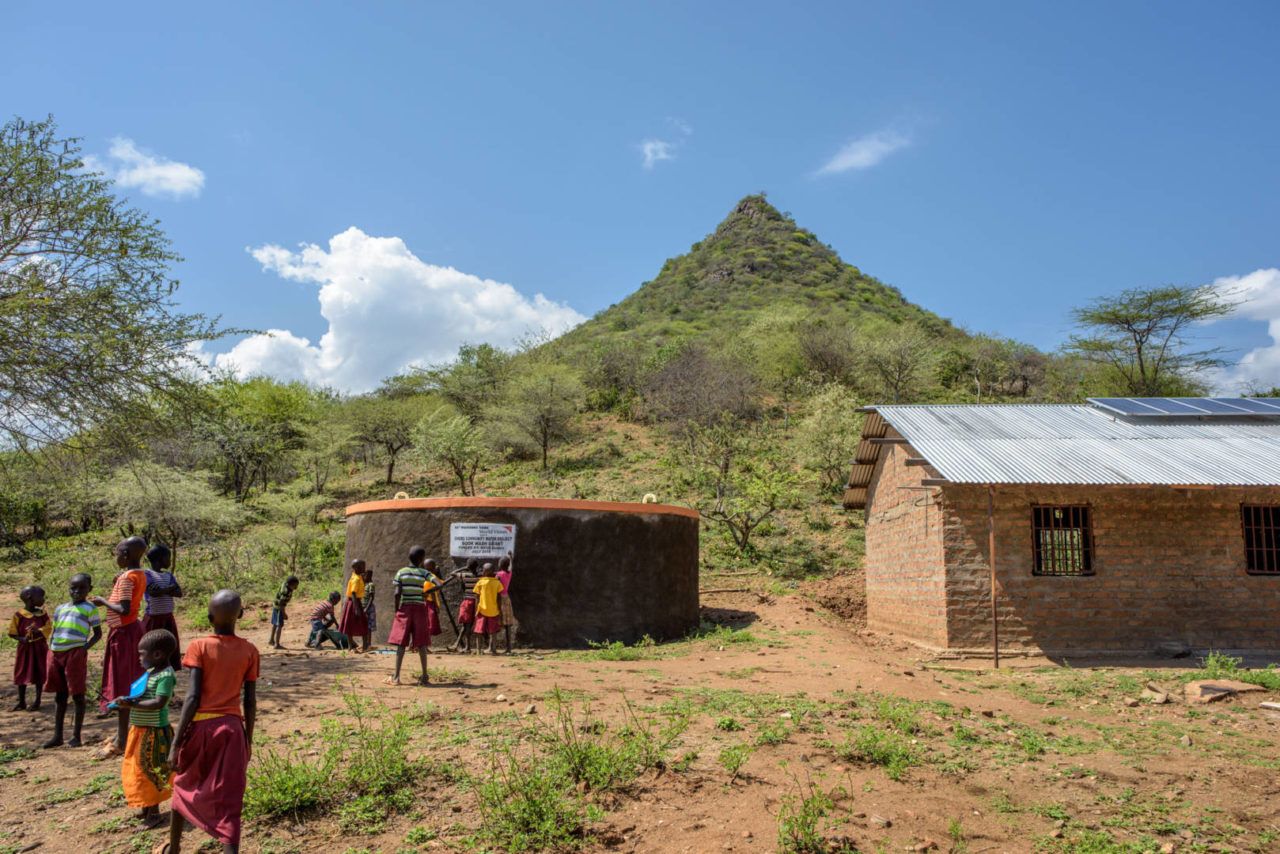
Water is stored in 50-cubic-meter tanks at each of the three schools. Children at Kesot Primary School watch water technicians repair a leak between the tank and a standpipe. With water stored in tanks and kiosks along the length of the pipeline, people are able to access water even while sections of pipe are isolated for repairs. (©2018 World Vision/photo by Jon Warren)
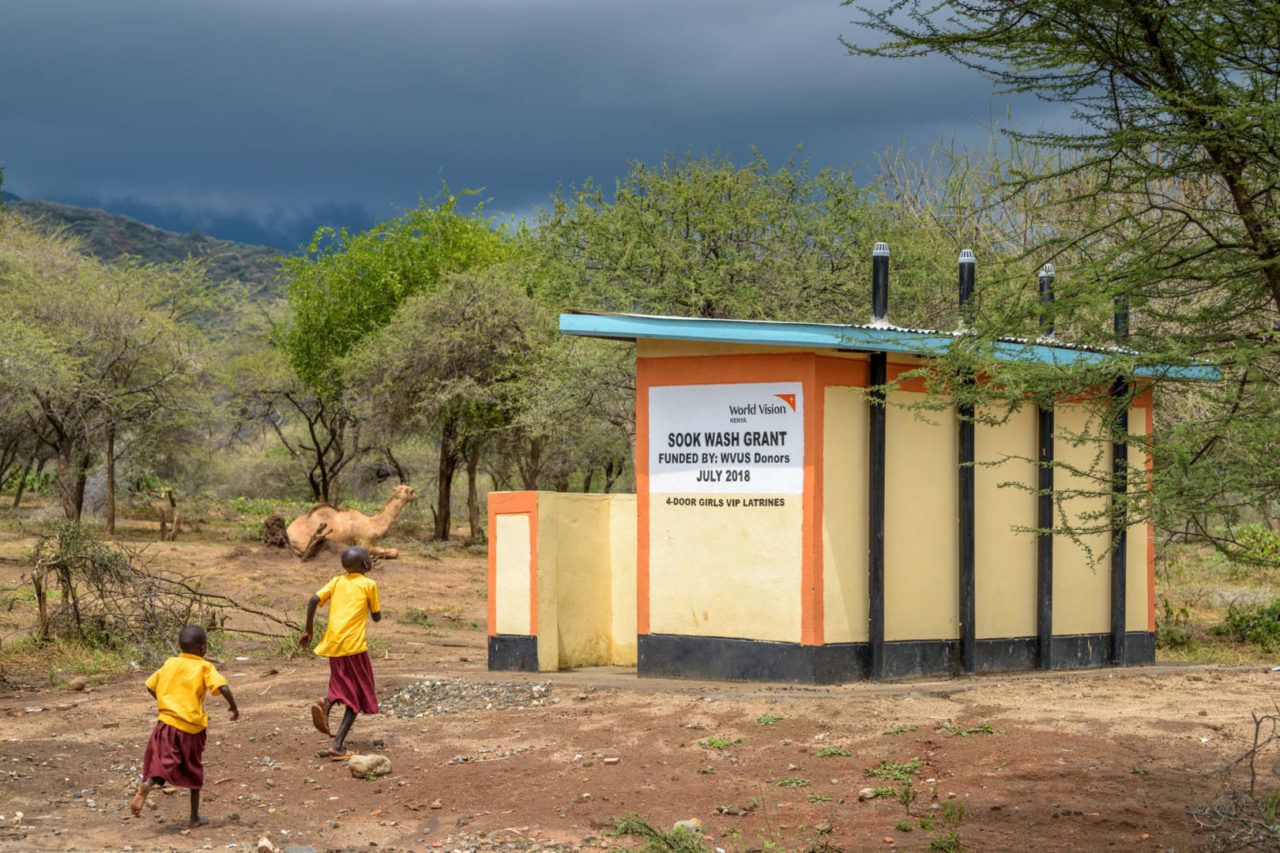
Cheru, left, and her older sister, Dina, run to the girls’ latrine at Kesot Primary School. Now that schools have sinks for handwashing and boys’ and girls’ toilets, students are learning about cleanliness and hygiene and taking those lessons home to share with their families. (©2018 World Vision/photo by Jon Warren)
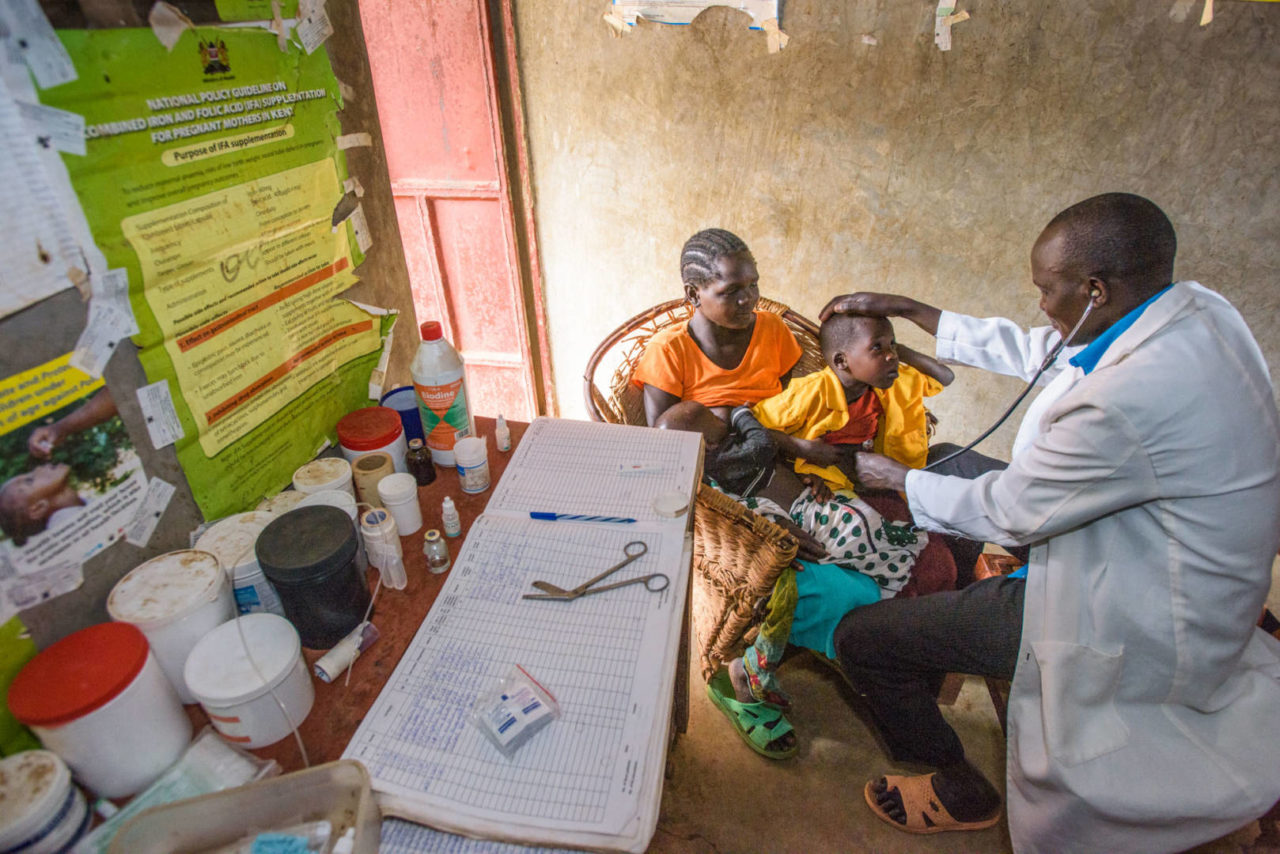
Cheru and her mother, Monica, visit the Kesot health center. A standpipe and toilets are important additions to the health center for both patients and staff. Previously, patients had to bring their own water. (©2018 World Vision/photo by Jon Warren)
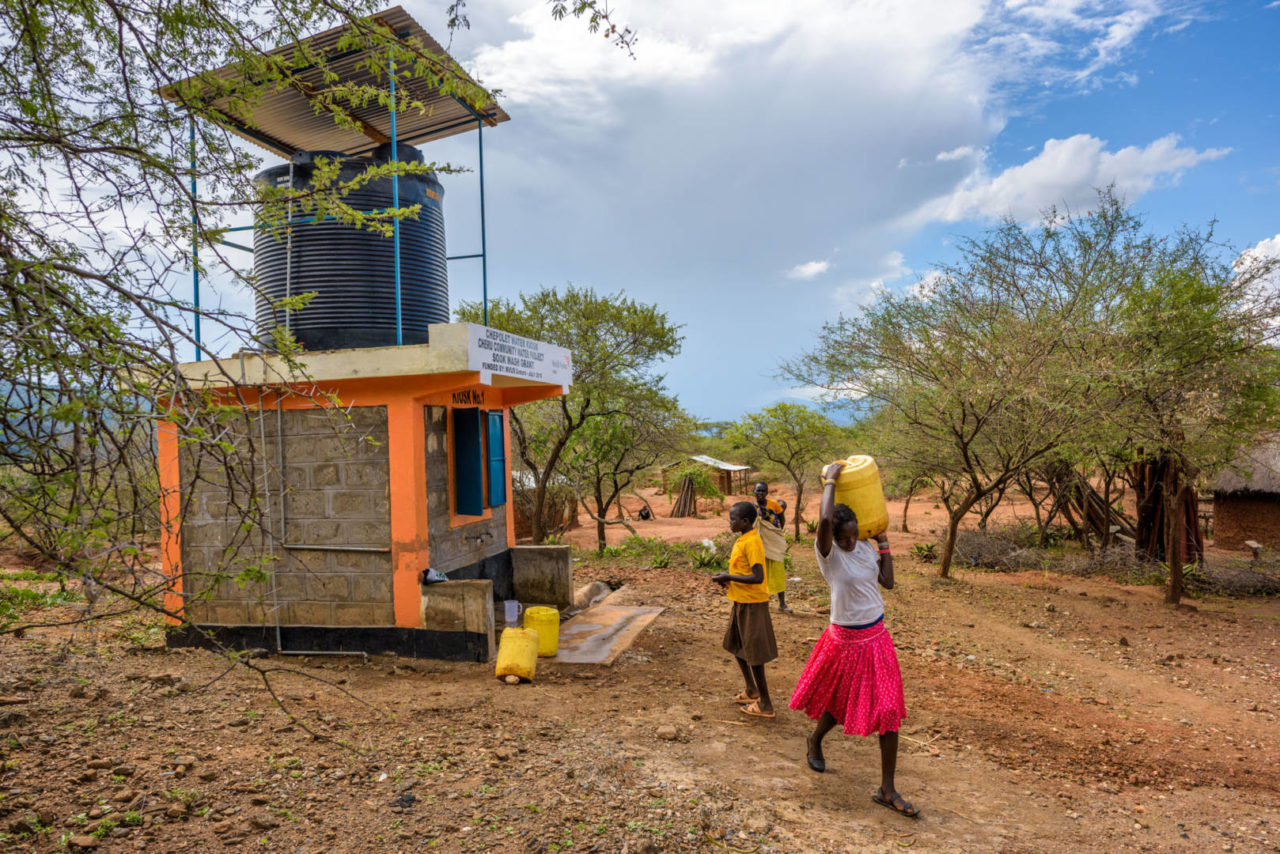
Clean, plentiful water is available close by for everyone in who lives along the pipeline. Fetching water was once a daily struggle, but now people can prioritize health, education, and income activities. (©2018 World Vision/photo by Jon Warren)
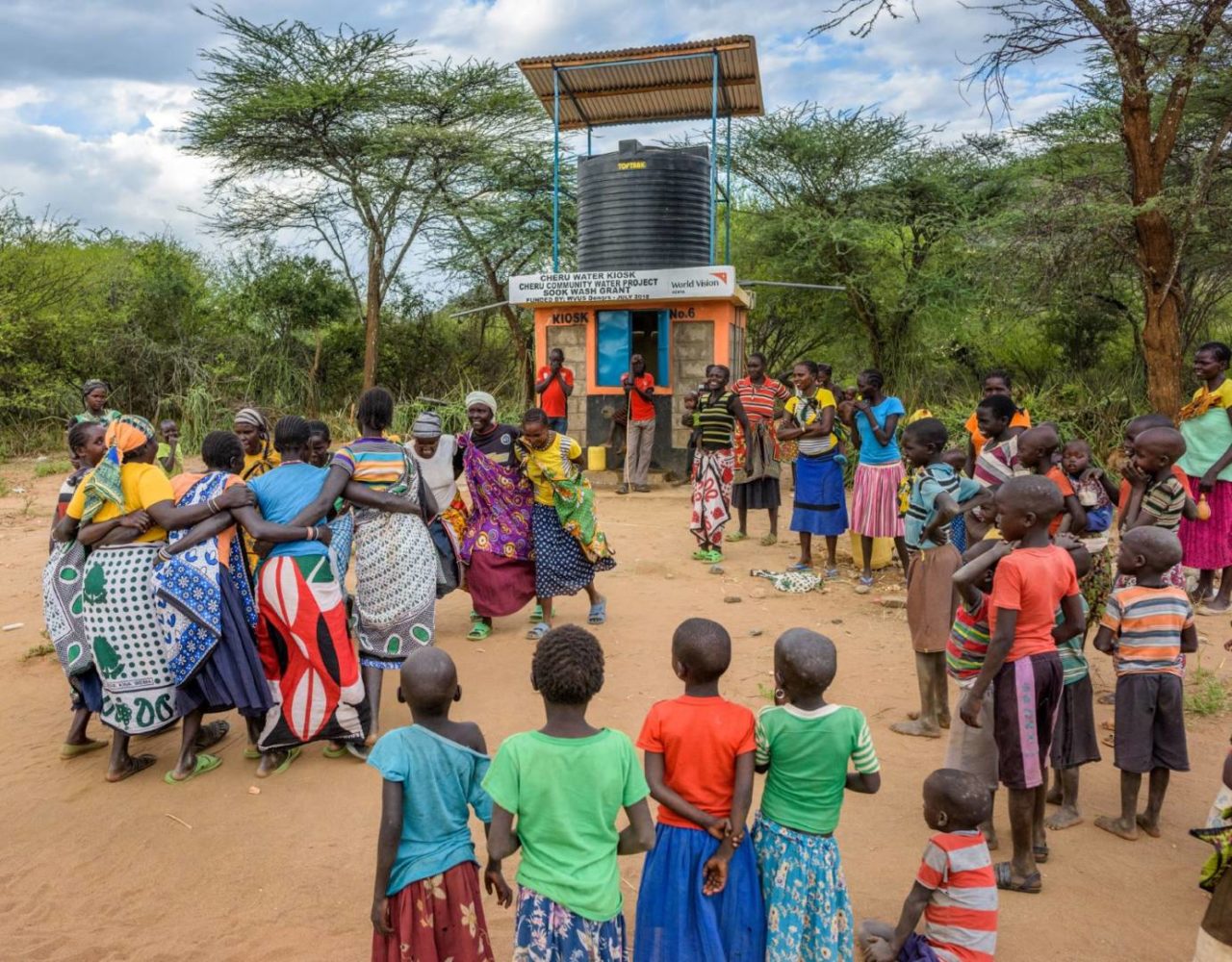
Children look on in amazement as adults play childhood games and sing during a celebration for the opening of the pipeline. “We’re happy; the animals are happy, even the birds are happy!” says Cheru’s father, Samson. (©2018 World Vision/photo by Jon Warren)
How you can help end the global water crisis
- Learn more about clean water and how you can be part of the movement to end the global water crisis by 2030.
- Join us in praying that more and more communities, including Grace’s, would have access to clean water.
- Walk or run the Global 6K for Water on May 16, 2020, to provide life-changing clean water to one person in need. You’ll walk or run with the picture of the child receiving clean water through World Vision’s water projects.
- Give a monthly gift to provide clean water to communities lacking it. Your ongoing gift creates lasting change in a community.
